Egyptian Art was born more than 3000 years BC. and islinked to religiosity , since most of its statues, paintings, monuments and architectural works are manifested in religious themes.
Thus, the interior of the temples, as well as the pieces or spaces related to the cult of the dead, were artistically elaborated. Tombs are one of the most representative aspects of Egyptian art.
This is because the Egyptians believed in the immortality of the soul and that it could suffer eternally if the body was desecrated.
Hence the mummification and the monumental character of the place where the mummies were placed, whose objective was to protect them for eternity.
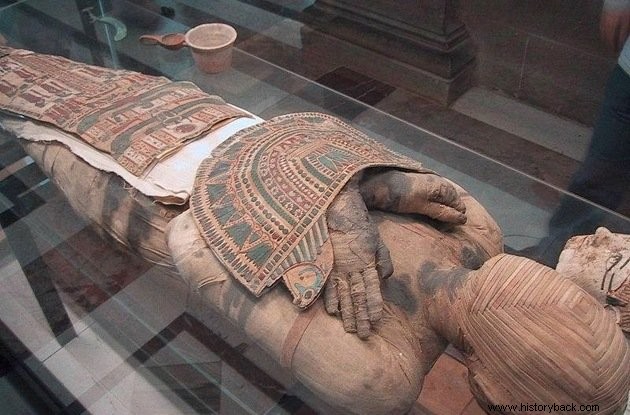
Egyptian Painting
The pharaoh hired artists to draw and paint on the walls of the pyramids, which would become his tombs. These paintings detailed their lives and their surroundings, so this art records part of Egypt's history.
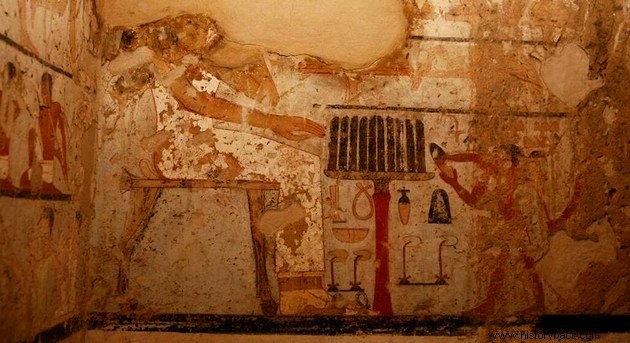
In this society, art was produced in a standardized way and left no room for creativity.
In this way, an anonymous art , because what was important was the perfect realization of the techniques performed and not the style of the artists.
The dimension of people and objects did not characterize a relation of proportion and distance, but the hierarchical levels of that society. Thus, the pharaoh was always the greatest among the figures represented in a painting.
See also:Egyptian CivilizationColors and Inks in Ancient Egyptian Art
The paints used in these paintings were extracted from nature:
- Black (kem ):associated with night and death, the black color was obtained from wood charcoal or pyrolusite (manganese oxide from the Sinai desert).
- White (hedj ):extracted from lime or plaster, white symbolized purity and truth.
- Red (decher ):it represented energy, power and sexuality and was found in ocher substances.
- Yellow (ketj ):was associated with eternity and was extracted from hydrated iron oxide (limonite).
- Green (uadj ):symbolizes regeneration and life and was obtained from the Malachite of Sinai.
- Blue (khesebedj ):extracted from copper carbonate, blue was associated with the Nile River and the sky.
Characteristics of Egyptian Painting
There were many rules to be followed in painting and low-relief produced in Ancient Egypt:
- Absence of three dimensions;
- Absence of shadow;
- Using conventional colors.
Law of Frontality
The law of frontality is the most striking feature in Egyptian painting. This rule stated that people's torso should be represented from the front, while the head, legs and feet shown in profile.
The eyes are also depicted from the front. This way of representation creates a visual combination of side and front.
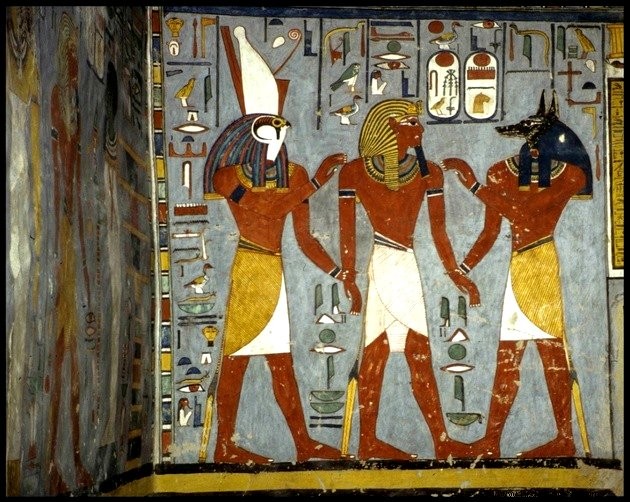
In the words of art historian Ernst Gombrich:
See also:TutankhamunEgyptian Sculpture
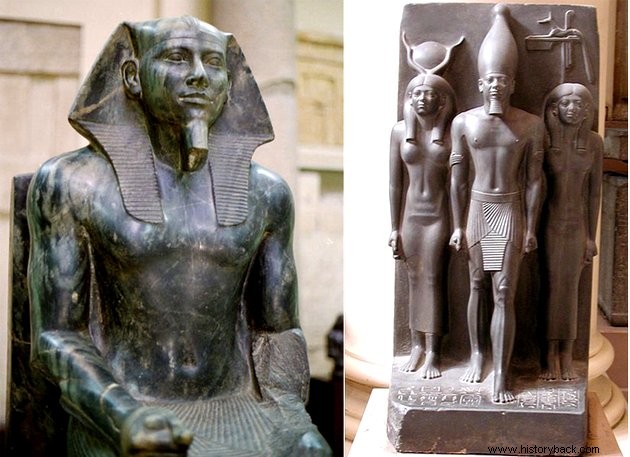
Most ancient Egyptian sculptures are representations of the pharaohs and gods, presented in frontal, static forms and without any facial expression.
The sculptures of the pharaohs were always represented in the same position:man standing with his left foot forward, man sitting cross-legged or sitting with his left hand resting on his thigh.
See also:Ancient EgyptCharacteristics of Egyptian Sculpture
- Static shapes;
- Exempt forms of facial expression;
- Convention following:standing or sitting.
Egyptian Sphinxes
With a lion's body (representing strength) and a human head (representing wisdom), sphinxes are undoubtedly the most famous Egyptian sculptures. They were placed at the entrances of temples in order to ward off evil spirits.
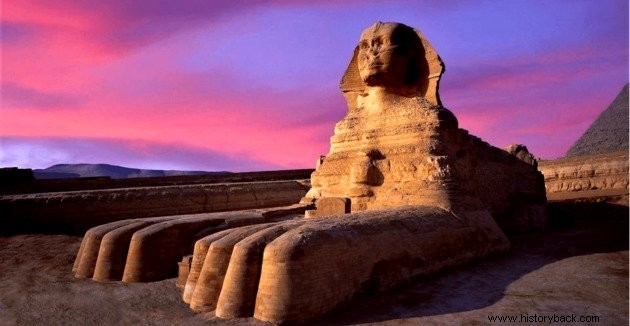 See also:Sphinx of Giza
See also:Sphinx of Giza Egyptian Architecture
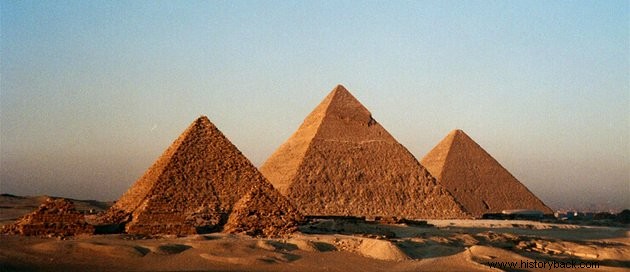
The architecture of this period reflects the functionality , which gave it incomparable strength and durability for the time.
The pyramids in the desert of Giza are the most famous architectural works of Egyptian architecture. It is also in the region of Giza that the most famous sphinx, the Great Sphinx of Giza, is located.
While the mastaba was the tomb of the Egyptians, the pyramids were the tombs of their pharaohs, who were considered the representatives of God on earth.
It is important to note that the base of the triangle represented the pharaoh and its tip represented his connection with God.
See also:The Pyramids of EgyptCharacteristics of Egyptian Architecture
- Solidity and durability;
- Feeling of eternity;
- Mysterious and impenetrable appearance;
- Solemn immobility.
Curiosity - Portraits of Fayum
Portraits with realistic features painted on wood and placed on the mummies have been found in the period of Roman Egypt, when the Romans dominated the region.
These paintings were mainly made in the Fayum region, located 130 km from Cairo, the capital of the country.
Check out the video a little more about it:
The Fayum Portraits See also:Egyptian Mythology